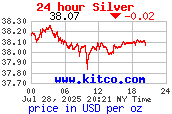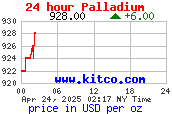The Lincoln District occupies an area of about three square kilometers. Copper dominated skarns, including the Creole Mine, occur in close proximity to the Lincoln Stock. These deposits contained significant lead-zinc and precious metal credits as well.
The copper zone on the west side of the Lincoln District is market by a strong, continuous magnetic anomaly that follows the contact of the Lincoln Stock to the west with the carbonate rocks to the east. This is the previously described Creole Skarn Target.
A second major north-trending magnetic high extends through the eastern part of the district (figure 2). On the surface the magnetic anomaly is marked by a nearly continuous string of mines and prospects that exploited Pb-Zn-Ag-Au skarns and mantos. A few dike rocks are exposed along this trend, but for the most part the intrusive rocks, presumed to be the source of mineralization here are not seen.
Samples taken by GCSM along this trend consistently containing multiple ounces of silver, several percent (or several 10’s of percent) combined lead-zinc, considerable gold and are anomalous in molybdenum.
Multiple targets are defined at depth by the coincident geophysical and geochemical anomalies. To our knowledge there has been no drilling in this area.
The potential exists here for near surface skarns, mantos and chimneys. At moderate depth, perhaps 200-500m, these deposits may transition into more copper-rich skarns. The magnetic highs are large and continuous and there is the potential for a porphyry copper/skarn system at the contact with intrusive phases.
The magnetic and geochemical data suggest an underlying heat source to the Lincoln District that is not exposed at the surface. The strong magnetic anomaly at the west edge of the district may be a wedge of skarn mineralization between the Lincoln Stock and a buried intrusion. The eastern anomaly may represent another zone of skarn on the east flank of this buried intrusion. In general the sections suggest an altered intrusion (magnetic low) flanked on either side by skarn mineralization (magnetic highs). Widespread diopside hornfels in the eastern part of the district also supports the possibility of this buried heat source as does the broad distribution of mineralization. Although copper is zoned to the west in the district, molybdenum concentrations are high in the vicinity of this eastern magnetic anomaly, implying a separate heat source. GCSM believes that deep drilling is warranted in the Lincoln District to explore for a buried porphyry copper system. A drill hole to 600m is planned (figure 2).

[ Top ]












